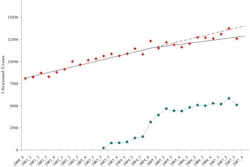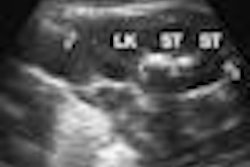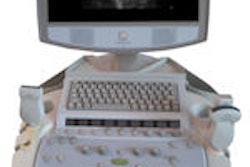While hand-carried echocardiography systems can give valuable diagnostic information to internists performing cardiac physical exams, they fail to aid in the crucial diagnosis of valvular dysfunction, according to research published recently in the American Journal of Medicine.
"This study shows that hand-carried ultrasound in the hands of internists adds information to that obtained from the physical examination for particular parts of the cardiac assessment: left ventricular function, cardiomegaly, and pericardial effusion," wrote a research team led by Dr. David Martin of Johns Hopkins University in Baltimore. "For valvular dysfunction, hand-carried ultrasound does not add information."
Seeking to determine if hand-carried ultrasound could add accuracy to cardiac physical examinations, the research team evaluated the results of a focused training program in hand-carried echocardiography. After a limited training period, 10 hospitalists performed cardiac examinations on 354 general medical inpatients between March 2004 and August 2005, first by physical examination and then by hand-carried ultrasound (Am J Med, January 2009, Vol. 122:1, pp. 35-41).
The study team then compared the percentage of times the findings from the hand-carried ultrasound and physical exam approximately or exactly matched a subsequent expert cardiologist assessment, which was made on a four-point scale (normal, mild, moderate, or severe). An approximate match was determined if the finding came within one scale level of matching the expert cardiologist assessment.
For pericardial effusion assessments, the addition of hand-carried ultrasound increased the overall percentage of correct assessments from 49% to 79% for exact matches and from 59% to 96% for approximate matches. In cases that actually had pericardial effusions, the percentage of accurate assessments increased from 3% to 60% when exact matches were required and from 48% to 99% for matching the expert assessment within one scale level.
"In both cases, this shows an improvement of greater than 50 percentage points," the authors wrote.
Modest gains were experienced in assessing left ventricular function. The use of hand-carried ultrasound increased the percentage of correct assessments from 46% to 59% when exact matches were required and from 67% to 88% for approximate matches. In cases that actually had abnormal left ventricular function, ultrasound led to percentage gains of 20% for exact matches and 36% for assessments within one scale level of the expert cardiologist assessment, according to the researchers.
In cardiomegaly, hand-carried ultrasound increased the overall correct percentage of cases from 59% by physical examination alone to 90%. Ultrasound was also more accurate in detecting aortic regurgitation than physical examination alone (35% versus 7%), but less accurate in detecting its absence (59% versus 86%). This indicated that hospitalists were over-reading aortic regurgitation; similar results were found for mitral regurgitation, according to the study team.
"The addition of hand-carried ultrasound failed to improve the assessments of aortic stenosis, aortic regurgitation, and mitral regurgitation," the authors wrote.
The researchers concluded that hand-carried ultrasound offered value in assessing left ventricular function, cardiomegaly, and pericardial effusion.
"Whether the clinical benefit achieved by improved immediacy of this information counterbalances the financial cost, the loss of physician time, and the effects of relatively high error rates (both false positives and false negatives) has not been determined," the authors concluded. "Until more definitive assessment of these issues is done, internist use of hand-carried ultrasound at the bedside should be limited to clinically focused situations for which there is a proven informational benefit, such as for left ventricular function and pericardial effusion when the timeliness of the information may be important."
By Erik L. Ridley
AuntMinnie.com staff writer
March 25, 2009
Related Reading
Handheld echo offers rapid assessment of volume status in heart failure, October 13, 2008
European cardiologists eye hand-carried ultrasound, May 20, 2008
Handheld ultrasound performs well in ob/gyn applications, March 14, 2008
Compact ultrasound proves successful in outpatient cardiac setting, April 19, 2007
Hand-carried ultrasound enhances bedside cardiovascular examination, September 29, 2004
Copyright © 2009 AuntMinnie.com




















